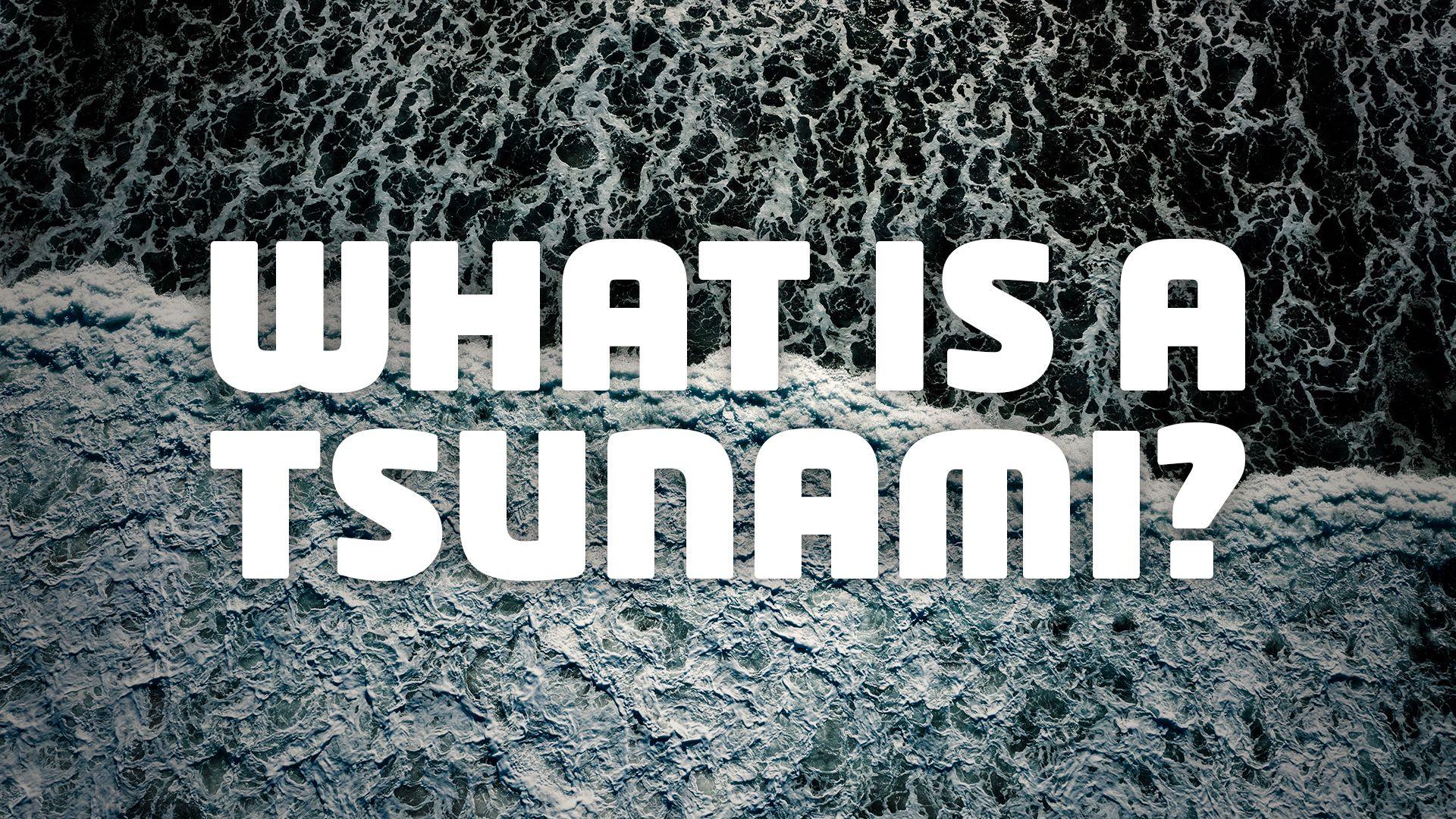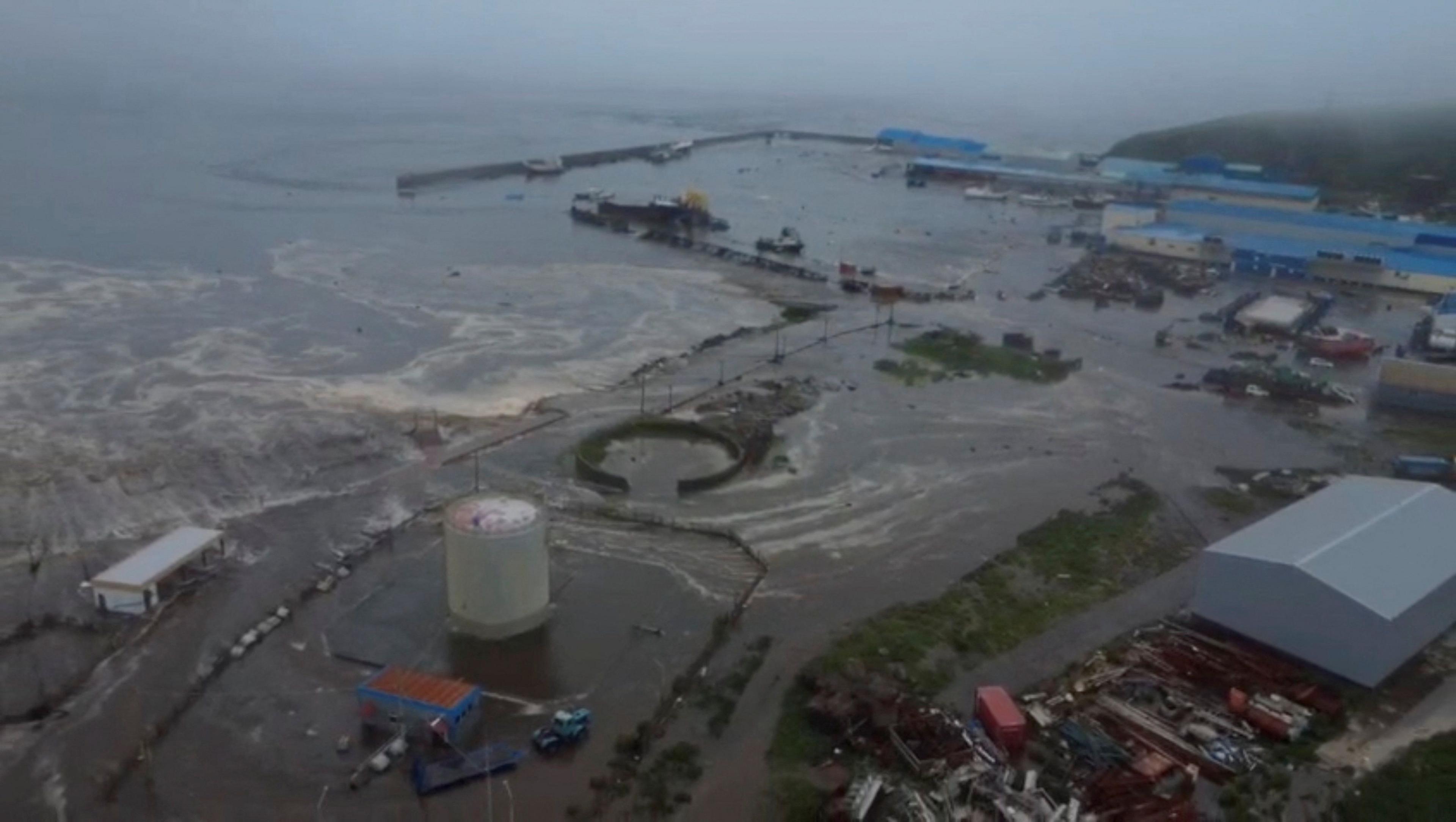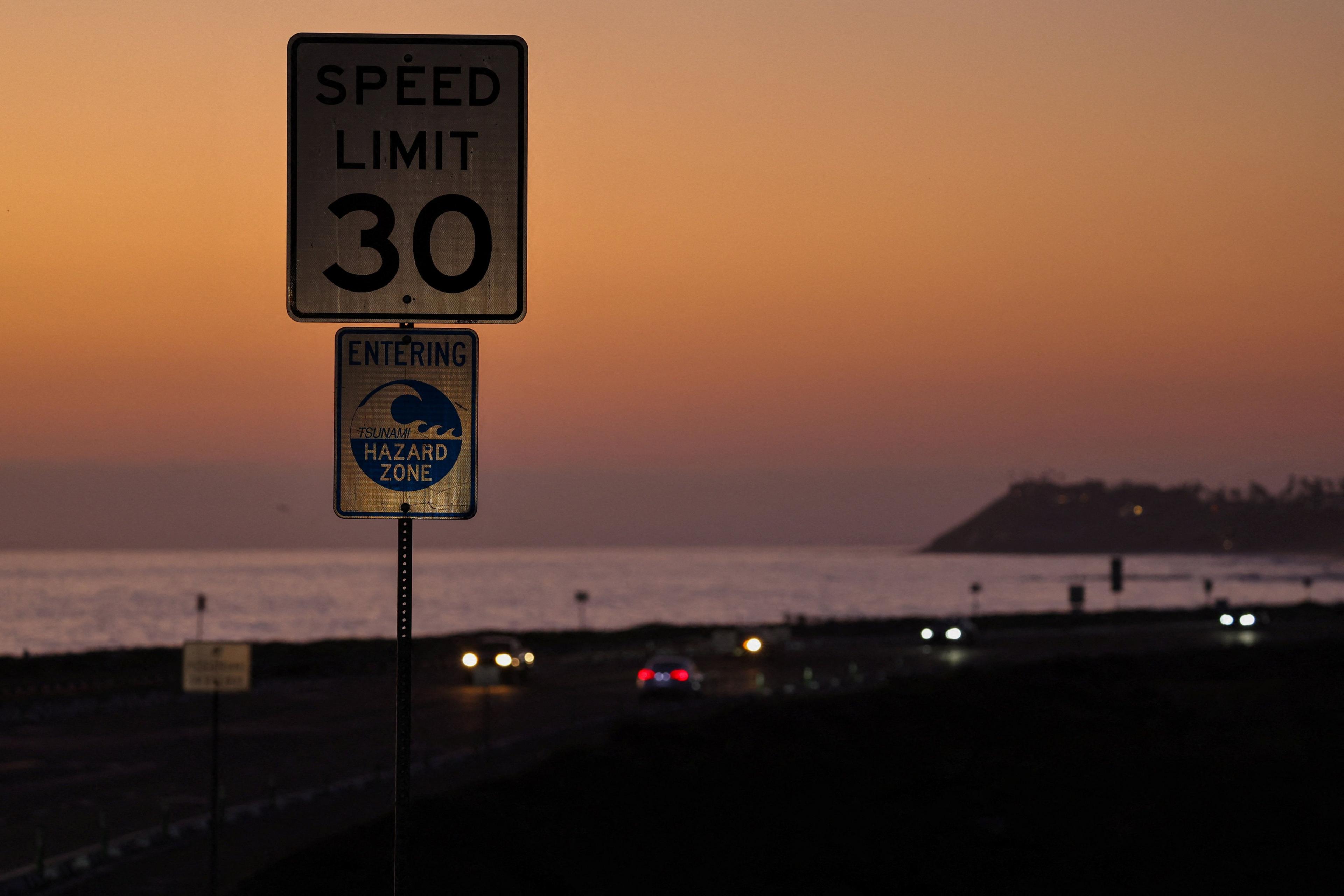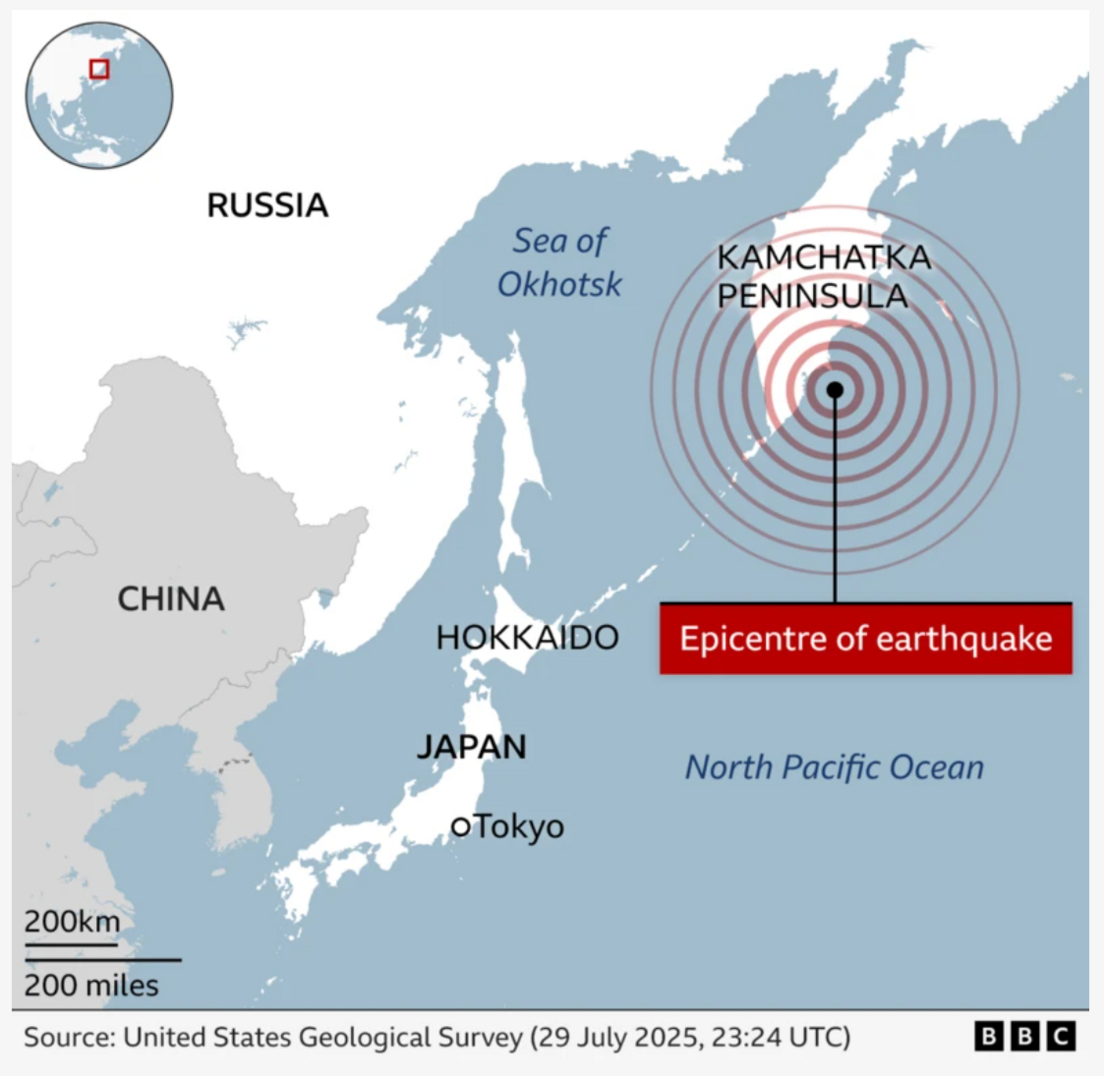What is a tsunami and what causes them?

- Published
Millions of people across the Pacific, including countries such as Japan and the United States, were told to evacuate and move to safety on Wednesday, after one of the strongest earthquakes ever recorded caused a tsunami.
Large waves were triggered by the massive 8.8 earthquake, which happened in the sea off Russia's far eastern coast, and have reached the shores of US states Hawaii and California.
There have been no reports of any injuries following the tsunami warnings.
What is an earthquake? Video, 00:02:01
- Published6 February 2023
Everything you need to know about volcanoes
- Published1 May 2024
What is a tsunami?

Tsunami waves flood the Severo-Kurilsk, Sakhalin region of Russia after the powerful magnitude 8.8 earthquake struck
A tsunami is a giant wave (or a series of waves) that crashes onto land.
According to the British Geological Survey, they can be caused by vertical seabed movement that causes a change in the height of the sea surface, like a step, travelling through the water column.
The word 'tsunami' comes from Japanese. It means 'harbour wave' – because these waves often hit coastal towns and harbours. Japan often experiences earthquakes and tsunamis.
Speaking to Newsround, Dr Amy Gilligan, a seismologist (a scientist who studies earthquakes) from the University of Aberdeen, explained how tsunamis are different to big waves you might see during a storm.
"A tsunami wave is powerful and will keep travelling in-land very quickly, it's more like a solid wall of water with things inside it, like debris that you don't typically get in normal waves from the sea."
What causes tsunamis?
Most tsunamis are caused by underwater earthquakes. When the sea floor suddenly moves, it displaces water, pushing it up and out, creating a wave.
Volcanoes erupting under the sea and underwater landslides can also cause tsunamis.
Tsunamis carry a lot of energy from deep in the ocean, and as they get closer to land, the waves slow down, build up, and grow taller.

A tsunami warning sign is shown on the Pacific Coast Highway in California
How do tsunamis behave?
When tsunami waves are triggered by something such as an underwater earthquake, they can move very quickly, rippling outwards from the centre of where the earthquake happened.
In deep water tsunamis can travel as fast as a plane – up to 500 miles per hour.
As they slow and increase in size, the waves can reach several metres high.
Dr Amy says one of the typical warning signs that a tsunami is on its way is that water will suddenly retreat, pull back, and disappear from the beach.
"A tsunami happens because of disturbance in the seabed from something such as an earthquake that causes the sea level to rise.
"That wave travels all the way across the ocean, and so - as the water is piling up - water is pulled away from the land to be part of that growing tsunami wave."
Where are tsunamis most common?

A powerful magnitude 8.8 earthquake struck off Russia's far eastern Kamchatka Peninsula at about 11:25am local time on Wednesday 30 July, triggering tsunami warnings and evacuation orders in the US and Japan
Tsunamis happen most often around the Pacific Ocean, near places like Japan, Indonesia, and the west coast of America, as this is a region that is active for earthquakes.
The risk of a tsunami wave ever reaching the UK is very low.
However, 270 years ago, a small tsunami reached Cornwall in 1755 after an earthquake in Portugal.
"In the UK we're a long way from where most earthquakes happen," says Dr Amy.
"We get some very small earthquakes in the UK. Maybe only magnitude two or three and many times smaller than the earthquake we've seen near Russia."
How are tsunamis predicted and is there an early warning system?
Watch: Tsunami sirens blare in Honolulu after the earthquake on 30 July 2025
As most tsunamis start with an earthquake under the sea - scientists use machines called seismometers to detect these movements.
Scientists also use a system called DART (Deep-ocean Assessment and Reporting of Tsunamis). The system uses buoys that float on top of the ocean and have sensors deep underwater that can feel if the water pressure suddenly changes – a sign that a tsunami wave might be passing by.
Satellites in space can watch the ocean and spot changes in sea level.
All this information is then used to assess the danger to people and send out warnings so that people can move away from beaches and go to higher ground if necessary.
